Integrating a Classic ERP With Modern E-Commerce Solutions
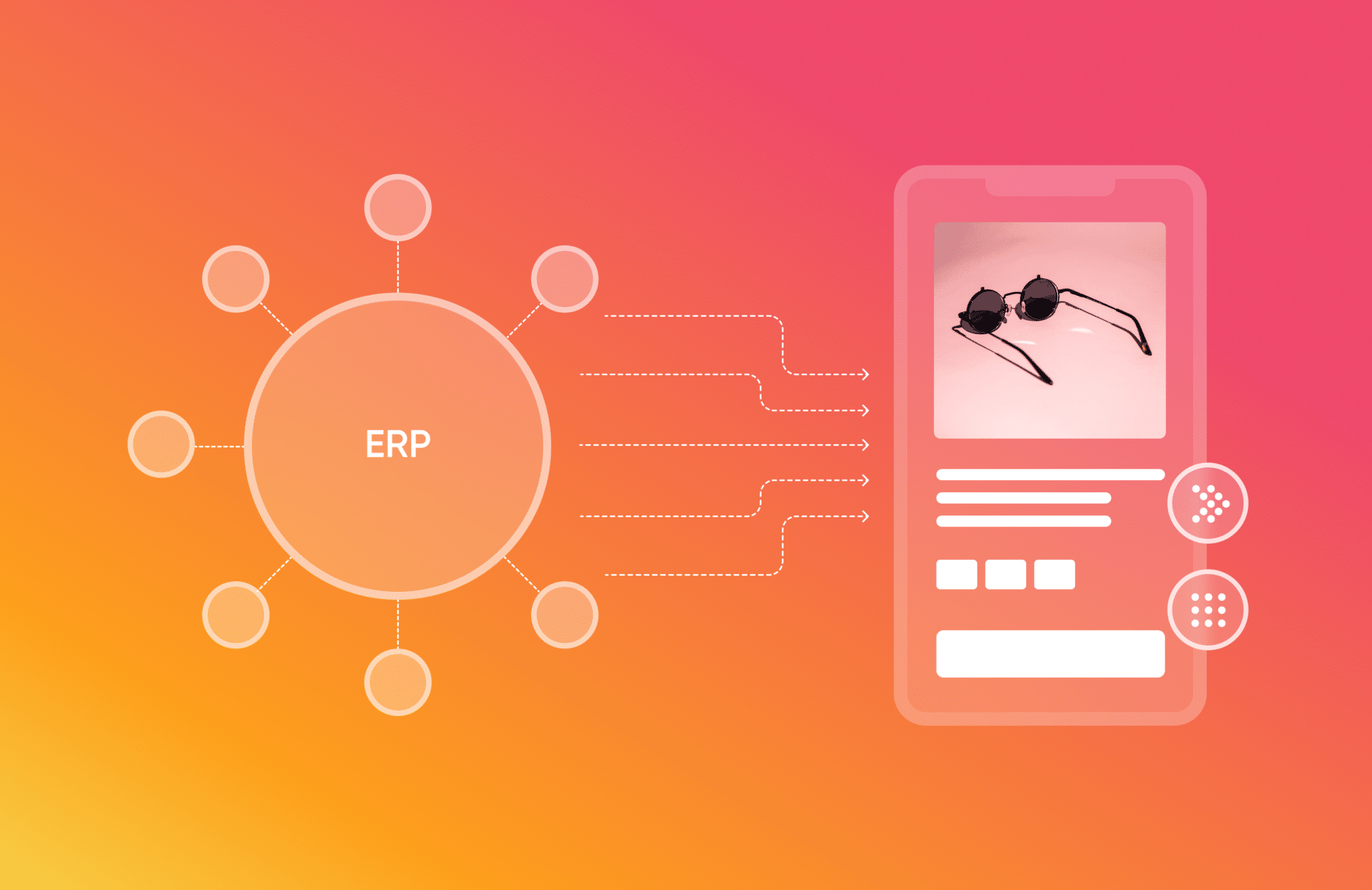
Enterprise resource planning (ERP) is a time-tested system for company data, but its monolithic structure creates challenges for brands seeking to scale their e-commerce initiatives.
Integrating e-commerce ERP software with headless microservices helps retailers improve accuracy and efficiency and deliver a consistent customer experience.
To successfully scale using ERP for e-commerce, retailers must identify pain points and integrate headless APIs to improve data hygiene and organization.
fabric Commerce Platform is a versatile headless architecture that helps retailers rapidly integrate ERP and e-commerce solutions or launch a fully-configurable e-commerce experience.
Enterprise resource planning (ERP) software is an evolution of earlier material requirements planning (MRP) systems. Since their initial inception, ERPs and their predecessors provided businesses with a centralized tool for tracking inventory and materials to improve efficiency and productivity.
Over time, technological innovations and changing needs prompted an evolution of ERP into a backend system. These systems — such as SAP ERP and Oracle ERP — grew into monolithic structures that let various departments accurately communicate and share information with others within an enterprise. In many cases, these ERP systems spun off industry-specific modules that fulfilled the unique needs of a given industry (such as manufacturing).
Despite the relevancy and decades-old growth of and familiarity with ERPs, ERP e-commerce software isn’t an adequate solution for every retailer. The COVID-19 pandemic highlighted the shortcomings of traditional ERP for e-commerce, including challenges in ERP implementation and adoption. And even though ERP e-commerce continues to evolve and integrate different facets of organizations, implementing ERP is a transformative and generational project.
What’s this mean for enterprise retailers? Embracing a monolithic ERP e-commerce solution can make sense, even considering its downsides. But with the relevancy of individual ERP components continually diminishing as both customers and e-commerce change, there are no guarantees that an ERP can sufficiently scale with a retailer. And because ERPs rely on multiple distinct systems to organize and send data, brands must accept and continually contend with a growing number of potential points of failure.
Let’s look at how enterprise retailers can integrate ERP e-commerce with modern e-commerce solutions to overcome these challenges and provide a framework for future growth and scalability.
[toc-embed headline=”Step 1: Determine Your ERP E-Commerce Capabilities”]
Step 1: Determine Your ERP E-Commerce Capabilities
Before you can start integrating modern solutions into your classic ERP e-commerce system, you need to take stock of its existing capabilities. In most situations, this process involves looking at what data you collect and how it’s managed and shared throughout your organization.
Look for and segment customer data, vendor information, inventory management, and other data relevant to your organization and industry. Then determine how your ERP handles this information.
Many ERP e-commerce solutions depend on multiple layers of modules to connect and send data to and through various systems. But these bolt-on integrations are still part of a monolithic system. If one aspect of the system crashes or fails, the entire system follows, requiring resources and development time to implement a fix or workaround even as your data is negatively impacted.
Replacing ERP e-commerce systems with APIs, such as fabric Commerce, moves away from this monolithic structure and to a headless architecture powered by microservices. This, in turn, helps large organizations scale as needed without incurring technical debt or adding more layers of potential points of failure.
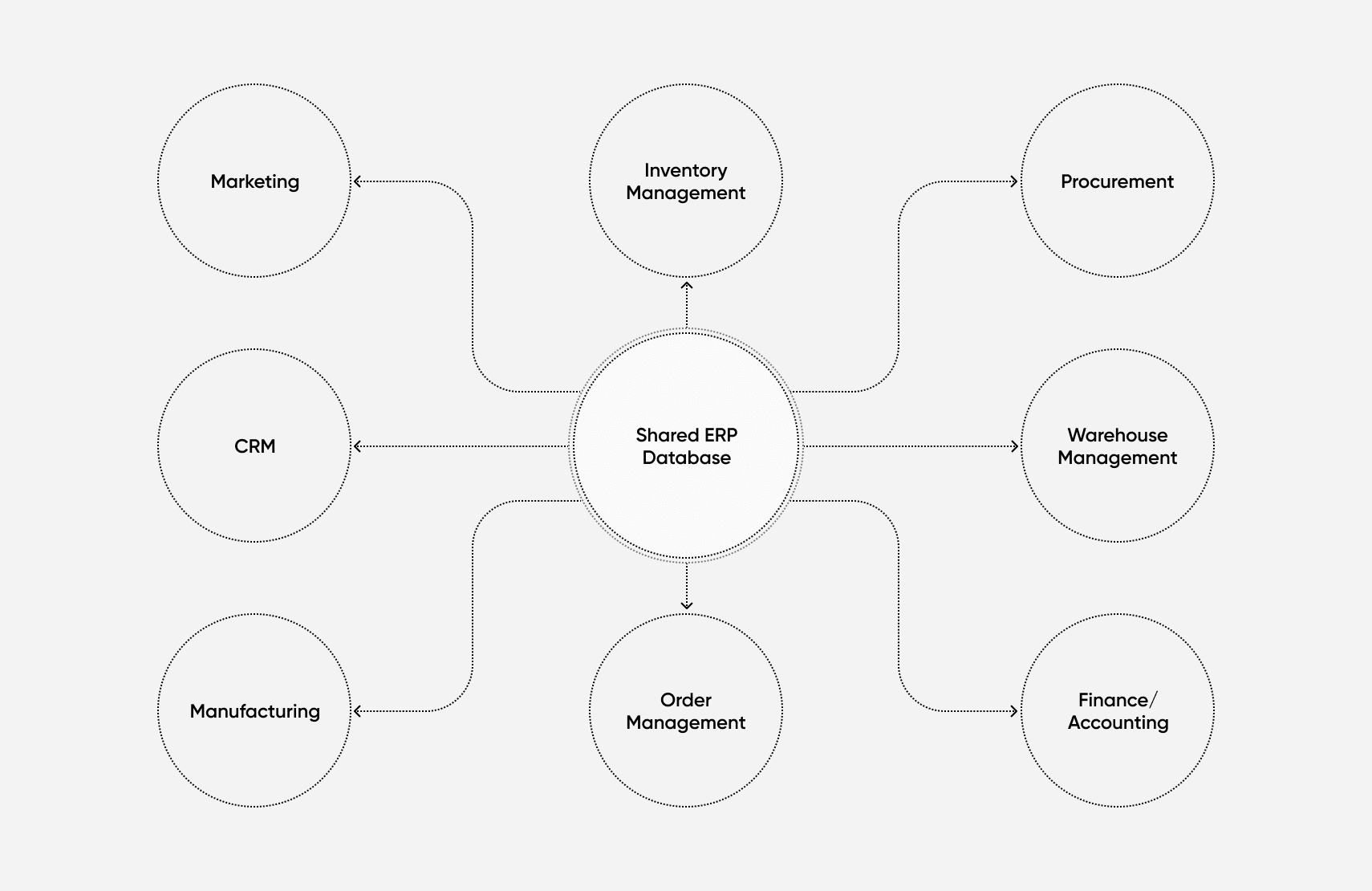
A simplified overview of how retailers may use ERP for e-commerce. Information manually entered into or collected by a central ERP database is shared with different modules or departments, providing each with the same information.
[toc-embed headline=”Step 2: Identify Pain Points”]
Step 2: Identify Pain Points
Analyzing your ERP e-commerce solution can shed light on the issues your organization must contend with while using the system. These issues can include:
- Lack of sufficient training or familiarity with the UX
- Inaccurate data
- Inadequate analytics
Such issues aren’t unique to a small subset of brands or end-users, either. According to Accenture, 92% of current ERP systems represent a bottleneck for CIOs, particularly as it relates to data access and sharing.
For example, consider what could happen when a department manually enters inaccurate data into your ERP, potentially due to poor implementation or lack of support or training. This data is then relied upon by other departments and can result in failures, such as a mis-shipped customer delivery. If another department realizes the data is inaccurate, fixing the issue contributes to inefficiency, requiring multiple steps to improve data hygiene.
Your pain points may include not only data sharing, but the quality of your data analysis, too. What does the data in your ERP system say about your brand’s operating costs? Is it possible to determine what types of transactions you process? Can you identify which transactions fail — and why they fail?
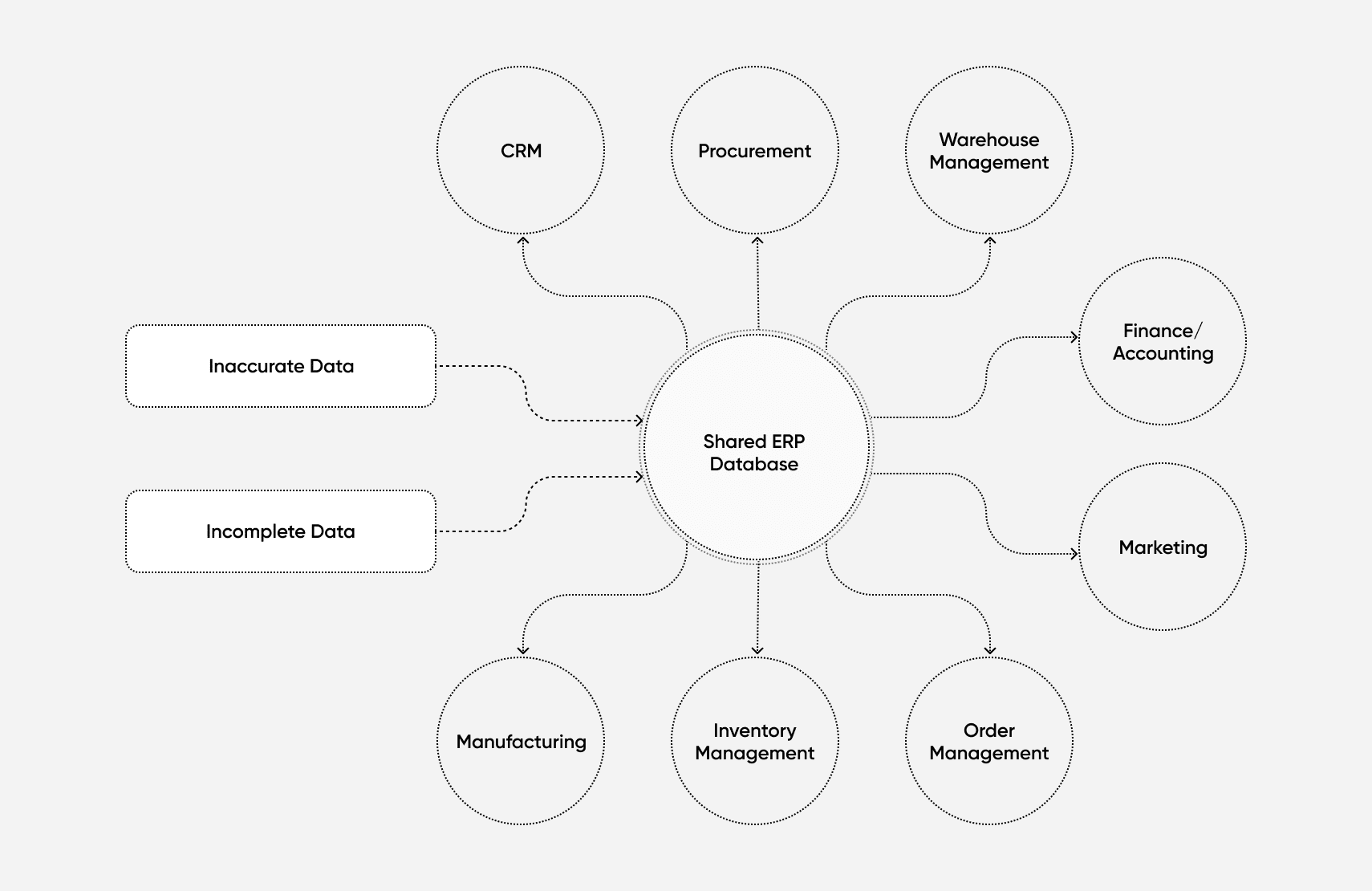
Using an ERP for e-commerce means each department is wholly dependent on the information entered into the shared database. As a garbage in, garbage out system, inaccurate or incomplete data can have a rippling effect across your organization — as Target Canada learned in 2013.
[toc-embed headline=”Step 3: Organize Your Data”]
Step 3: Organize Your Data
Identifying and isolating pain points and bottlenecks is necessary to improve the efficiency of your ERP system. During this process, determine which departments have the least accurate data: these are the systems that need to be replaced first.
However, it’s important to avoid what Accenture refers to as “manual/programmatic intervention” — development and integration of ERP systems that enable more accurate data collection and sharing, but which incur technical debt and add onto the total cost of ownership.
Instead, focus on integrating your ERP system with modern e-commerce solutions to help maintain data consistency across departments and sales channels. Because these systems are built to automate otherwise-manual processes and bypass bottlenecks, your team and customers have access to accurate and real-time information when needed.
For example, if your customer order or inventory data is inaccurate, a headless order management system, like fabric OMS, can plug into your existing ERP to share data in real-time. Inventory tracking can ensure an order placed on your e-commerce website is accurately reflected in your available inventory across all of your sales channels, enabling accurate customer tracking and automating restocking when needed.
Similarly, if your organization struggles to maintain consistent data between your vendors, ERP, and sales channels, integrating headless software, such as fabric PIM, automates the processes. Product information received from vendors can be input once, then automatically and instantly shared to each sales channel. This enables consistency throughout the customer experience without relying on multiple layers of backend systems, each of which represents a potential point of failure.
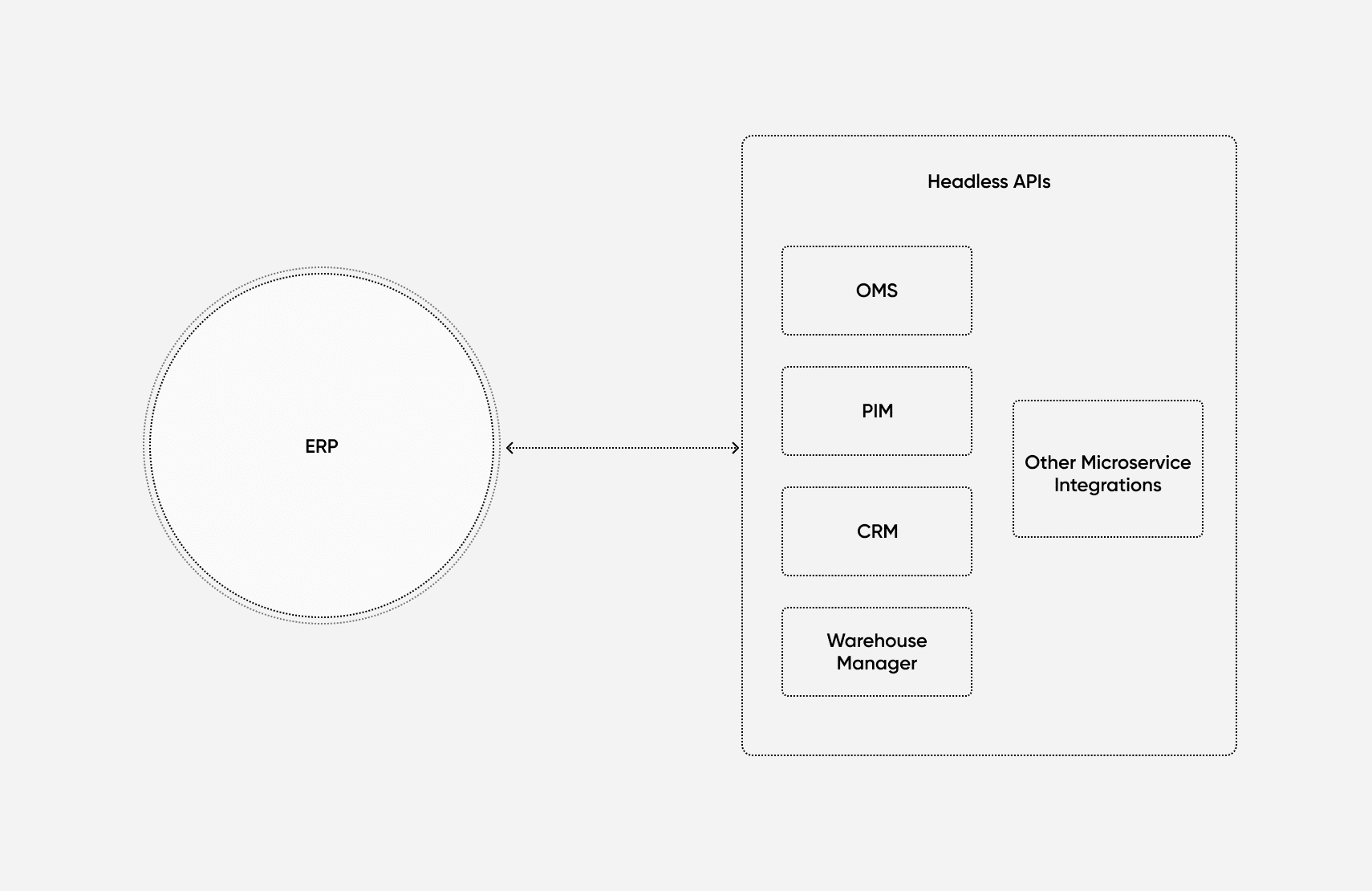
Integrating a classic ERP with modern e-commerce solutions, such as headless APIs, improves the accuracy of your data and ensures a smooth, real-time flow of information between each channel, department, and module.
[toc-embed headline=”Step 4: Replace the Customer Interface”]
Step 4: Replace the Customer Interface
Classic ERP e-commerce solutions haven’t been able to adequately catch up with modern e-commerce requirements. This is especially evident for retailers selling across multiple channels or those that prioritize omnichannel commerce.
As a backend system, ERP e-commerce can be exposed to API limits and other thresholds. In other words, as your business scales to different, newer, or additional channels, more and more stress is added onto the system.
At the same time, your e-commerce team may struggle to deliver a consistent omnichannel customer experience. This can limit the potential results of your e-commerce strategy by creating a disjointed and jumbled customer experience depending on how customers access your store and shop with your brand.
Decoupling the backend — your ERP — from the frontend, using headless software like fabric XM and microservice APIs, lets you provide access to channels beyond your online storefront while providing a consistent customer experience. From there, you can enable functionality, such as social or search purchases, that don’t require customers to use a single sales channel.
This additional functionality further enhances the customer experience. Customers are able to view what inventory is in stock or on backorder, take advantage of promotions and loyalty programs regardless of sales channel, and track and manage their orders, all in real-time.
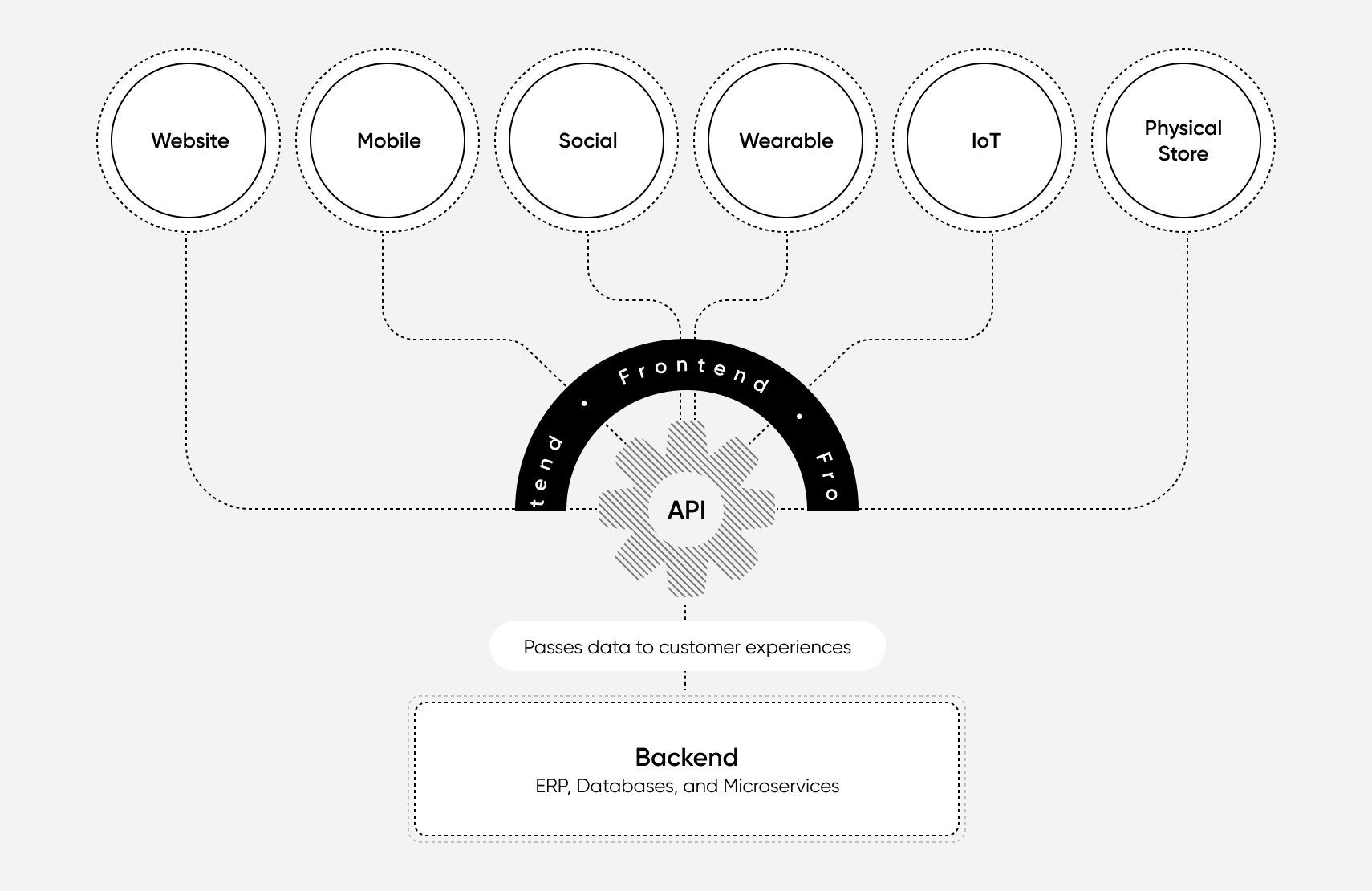
Separating the backend from the frontend helps retailers deliver a consistent customer experience across unique and various sales channels. This lets customers shop at the retailer regardless of device or location, with each channel providing access to the same information.

Program management @ fabric. Previously strategic transformation @ Lululemon, Amazon, Target, and JCPenney.